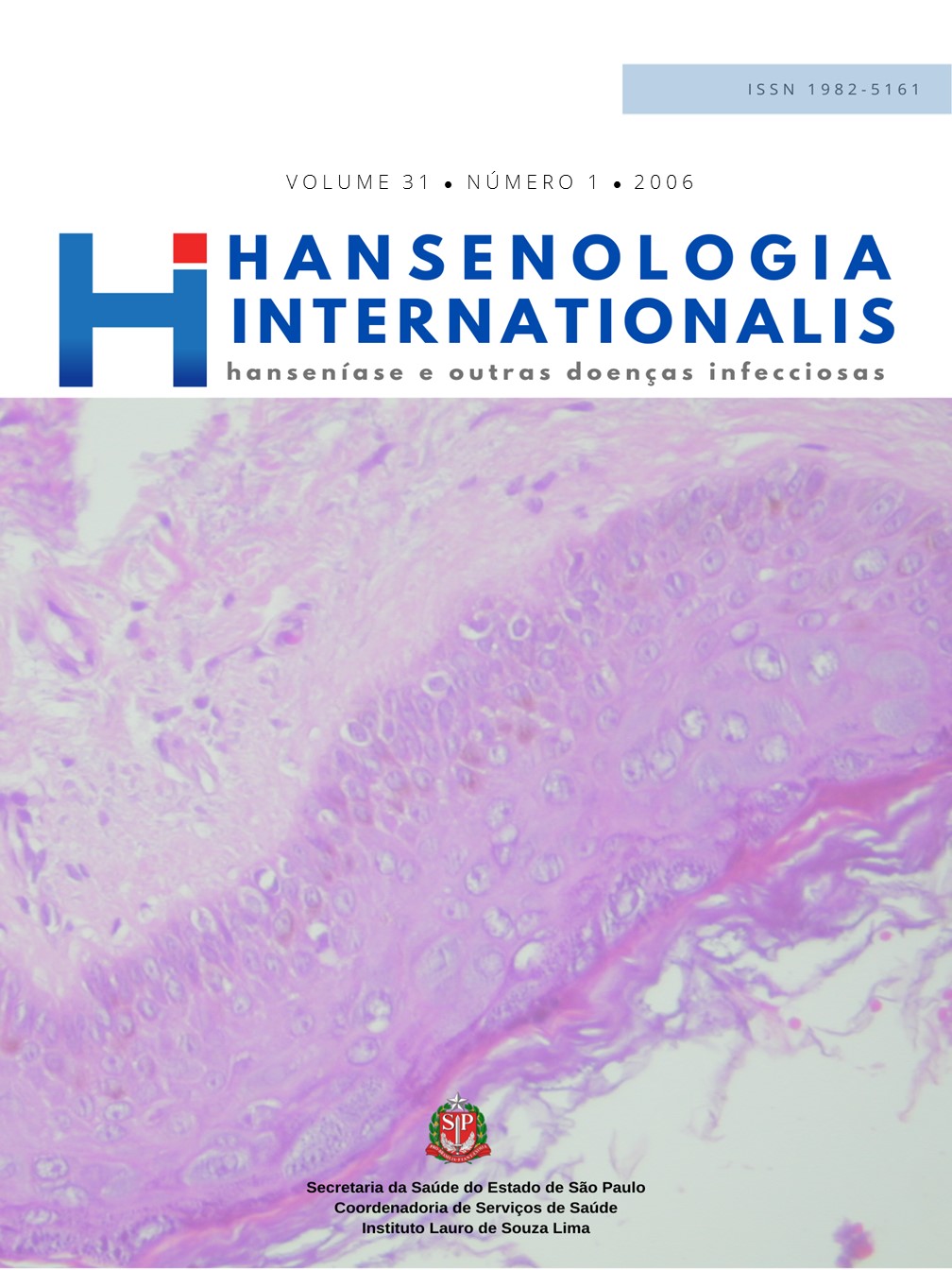Abstract
Aiming to eliminate leprosy as a public health problem in Brazil until 2005, the SUS (Unique Health System) in each city, with the purpose of descentralization of leprosy’s control actions, had the necessity of knowing the damage size through operational and epidemiological indicators and not detected (hidden) prevalence, in order to plan new action strategies and evaluate their results, respecting local and regional realities. Tocharacterize the leprosy endemy and estimate the occult prevalence in Uberlândia, a retrospective analitic study was realized with a survey of 613 dossiers of leprosy patients during the period from january, 1996 to december, 2000, by SINAN (Sistema de Informação de Agravos de Notificação). The results showed an occult prevalence estimative of 146 cases until 2000, increasing the official prevalence from 4,47/10.000 inhabitants to a real prevalence rate of 7,39/10.000 inhabitants. The sanitary (health) districts with higher occult prevalence estimative also demonstrated an increase of the detection coefficient in people under 15 years old and coincided with those areas where predominated the old disease focus (clusters). With an identification of prioritary areas, tecnical and operational factors were listed as factors which impede the leprosy control. Therefore, it’s craved to touch the SUS managers in the city, in the direction of proposing a health policy which prioritizes the quality of assistence and it’s hierarchy by a resolutive capacity consolidated in the health professional’s competence and in the development articulation and society mobilization echanisms to eliminate leprosy until 2010.
References
Brasília: Ministério da Saúde; 1998.
2 World Health Assembly. Leprosy Resolution WHA 44.9. FortyFourth World Health Assembly, 13 May; 1991.3 Ministério da Saúde (BR) /SPS/DAB. Dados do programa de controle da hanseníase em 1999. Brasília: Ministério da Saúde; 2000.
4 International Leprosy Association. Report of the ILA Technical Forum. Int J Lepr Other Myc Dis 2002; 70(Suppl):62p.
5 Ferreira J. Validade do grau de incapacidade como indicador de diagnóstico tardio de hanseníase. Hansenol int 1998; (n. esp):79-85.
6 Suárez REG, Lombardi C. Estimado de prevalência de lepra. Hansen int 1997; 22(2):31-4.
7 Ramos LBM. Perfil do usuário e sua perspectiva na utilização e na avaliação de unidades básicas de saúde [dissertação]. Uberlândia: Universidade Federal de Uberlândia; 2001.
8 Mendes EV. Distrito Sanitário: o processo social de mudança das práticas sanitárias do Sistema Único de Saúde. São Paulo/Rio de Janeiro: Hucitec Abrasco; 1999.
9 Andrade VLG. A urbanização do tratamento da hanseníase. Hansen int 1995; 20(2):51-9.
10 Joplin WH, McDougall AC. Manual de Hanseníase. Brasil: Livraria Atheneu Editora; 1991.
11 Izumi S, Budiawan T, Saeki K, Matsuoka M, Kawatsu K. An epidemiological study on Mycobacterium leprae infection and prevalence of leprosy in endemic villages by molecular biological technique. Indian J Lepr 1999; 71:37-43.
12 Andrade VLG. Evolução da hanseníase no Brasil e perspectivas para sua eliminação como um problema de saúde [doutorado]. Rio de janeiro: Fundação Oswaldo Cruz, Escola Nacional de Saúde Pública; 1996.
13 Oskam L, Slim E, Bührer-Sékula S. Serology: recent developments, strengths, limitations and prospects: a state of the art overview. Lep Rev 2003; 74(3):196-202.
14 Lombardi C, Suárez REG. Epidemiologia da Hanseníase. In: Talhari S, Neves RG, editores. Hanseníase. 3a ed. Manaus; 1997. p.127-36.
15 Goulart IMB, Lopes VR, Massuda D. Fatores que interferem no controle da Hanseníase na rede básica de assistência à saúde. Hansen int 1991; 16(1-2):7-15.
16 World Health Organization. The elimination of leprosy as a public health: status report. Geneva: WHO; 2000.
17 Ministério da Saúde (BR) /SVS/PNEH. Plano Nacional de Eliminação da Hanseníase em Nível Municipal 2006-2010. Brasília: Ministério da Saúde; 2006.
This journal is licensed under a Creative Commons Attribution 4.0 International License.
